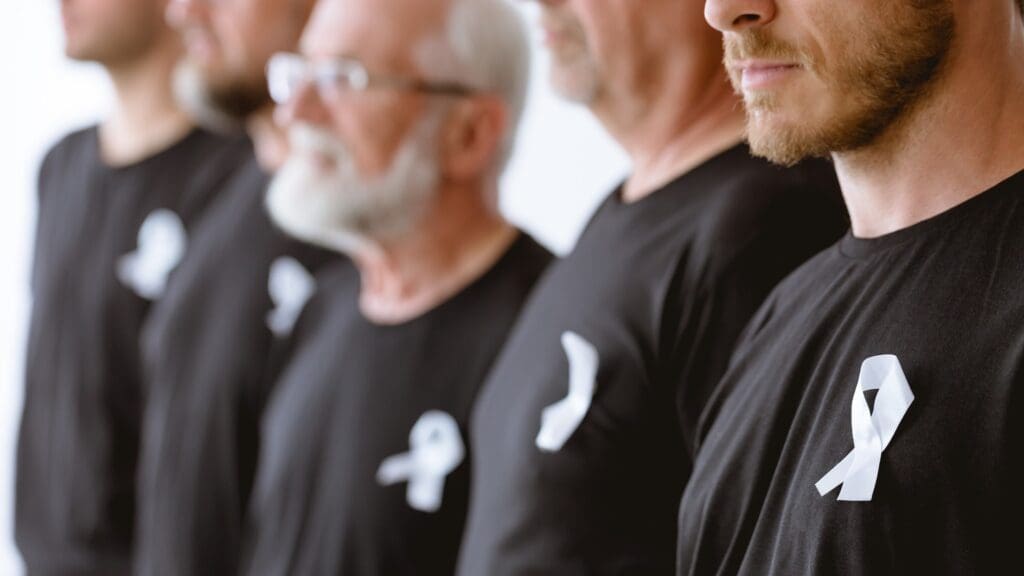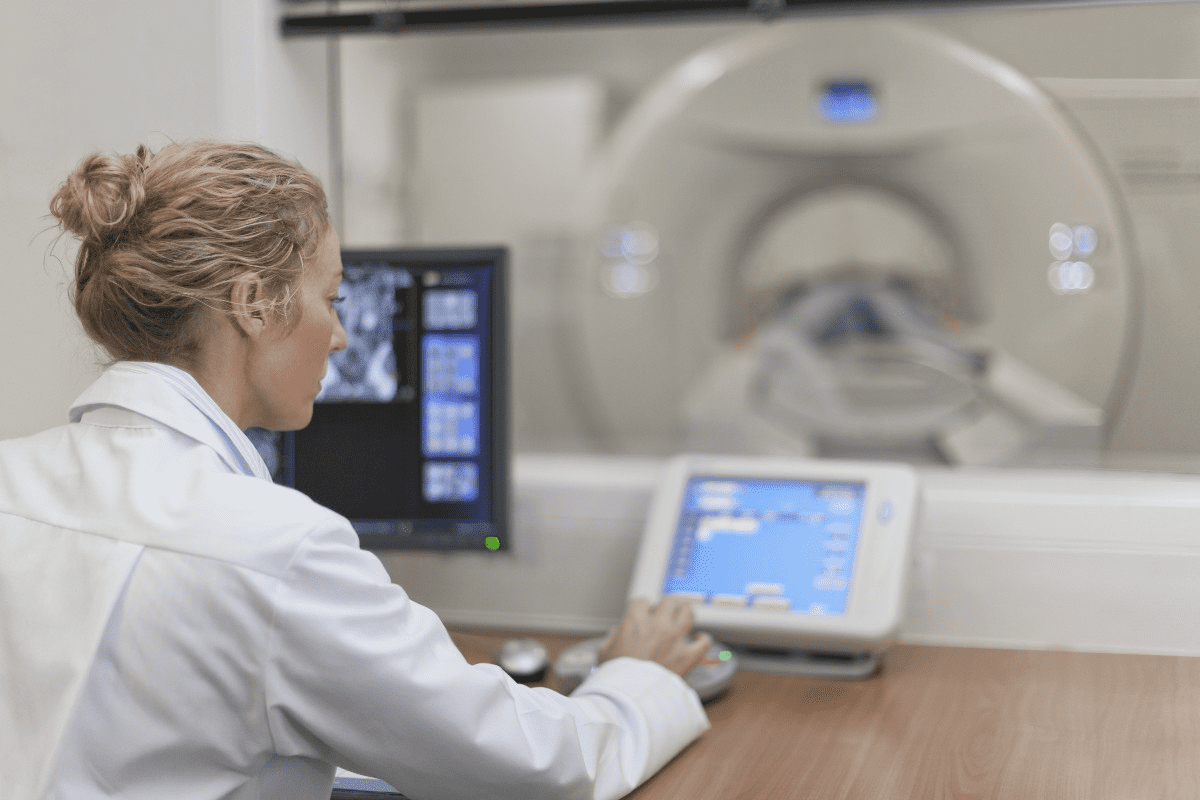Last Updated on November 26, 2025 by Bilal Hasdemir

It’s important to know the different types of cancer that affect men. This knowledge helps with prevention, early detection, and treatment. At Liv Hospital, we offer top-notch healthcare for international patients.
Some cancers are more common in men. Knowing the risks and symptoms can greatly improve treatment chances. We’ll look at the 12 most common cancer tumor types in men, their types, and important stats.
We want to give men the knowledge they need to take care of their health. Our aim is to help men understand their risks and make smart choices about their care.
Key Takeaways
- Knowing the 12 most common types of cancer in men is key for prevention and early detection.
- Some cancers are more common in men. Knowing the risks is important.
- Liv Hospital is dedicated to providing world-class healthcare for international patients.
- Early detection and effective treatment can greatly improve outcomes for men with cancer.
- It’s our priority to empower men with knowledge about cancer risks and symptoms.
Cancer in Men: Overview and Statistics
Cancer is a big health issue for men around the world. Looking at the numbers helps us understand how to prevent and treat it better.
Current Cancer Prevalence in Male Populations
Cancer types differ by region, with some being more common in certain areas. Prostate cancer is a top concern, mainly in older men. Other common cancers include lung cancer, liver cancer, and colorectal cancer. We’ll dive into the latest stats on these cancers.
| Type of Cancer | Estimated New Cases | Estimated Deaths |
|---|---|---|
| Prostate Cancer | 191,930 | 33,330 |
| Lung Cancer | 116,300 | 120,790 |
| Liver Cancer | 30,520 | 21,600 |
| Colorectal Cancer | 79,670 | 27,640 |
Leading Causes of Cancer-Related Deaths in Men
Cancer is a major killer for men worldwide. Lung cancer is a top cause of death. Other deadly cancers include liver cancer, pancreatic cancer, and colorectal cancer.
Cancers like lung cancer and liver cancer are big problems. They’re linked to smoking, drinking too much, and exposure to harmful substances or viruses.
Understanding the Types of Cancer in Men
It’s important to know the different types of cancer that affect men. This knowledge helps in diagnosing and treating the disease. Cancer is not just one disease but a group of diseases that can occur in various parts of the body.
We sort cancers by where they start, which helps in planning treatment. The main types are carcinomas, sarcomas, lymphomas, and leukemias. Carcinomas, which start in epithelial cells, are the most common. They include cancers like prostate, lung, and colorectal cancer.
How Cancers Are Classified by Cell Origin
Cancers are grouped based on the cell they start in. Carcinomas are the most common, starting in epithelial cells. Sarcomas start in connective tissue like bone or cartilage. Lymphomas and leukemias affect the immune system, with lymphomas targeting the lymphatic system and leukemias the blood and bone marrow.
| Cancer Type | Cell Origin | Examples |
|---|---|---|
| Carcinomas | Epithelial cells | Prostate, lung, colorectal cancer |
| Sarcomas | Connective tissue | Osteosarcoma, liposarcoma |
| Lymphomas | Lymphatic system | Hodgkin lymphoma, non-Hodgkin lymphoma |
| Leukemias | Blood and bone marrow | Acute myeloid leukemia, chronic lymphocytic leukemia |
Solid Tumors vs. Liquid Cancers
Cancers can be solid or liquid. Solid tumors, like lung or breast cancer, form a mass. Liquid cancers, such as leukemia, affect the blood and bone marrow and don’t form a solid mass.
Knowing if a cancer is solid or liquid is key to choosing the right treatment. Solid tumors might need surgery, radiation, or a mix of treatments. Liquid cancers often require systemic treatments like chemotherapy or targeted therapy.
Understanding the different types of cancer helps us manage the disease better. This knowledge helps men make informed health decisions and choose the best treatment options.
Prostate Cancer: The Leading Cancer in Men
Prostate cancer is the most common cancer in men. It’s important to understand how to prevent, detect, and treat it. We’ll look at all aspects of prostate cancer to help you understand this serious health issue.
Risk Factors and Prevention
Knowing the risk factors for prostate cancer is key to preventing and catching it early. Age is a big risk factor, with most cases found in men over 65. Family history also matters, with a higher risk if a first-degree relative has had prostate cancer.
Genetic mutations, like in the BRCA1 and BRCA2 genes, and certain ethnic backgrounds also increase risk. For example, men of African descent are more likely to get prostate cancer.
Symptoms and Detection Methods
In the early stages, prostate cancer often doesn’t show symptoms. But as it grows, symptoms like trouble urinating and pain during urination may appear.
Screening tests like the Prostate-Specific Antigen (PSA) test and Digital Rectal Examination (DRE) are used to detect prostate cancer. The PSA test checks for PSA levels in the blood. For more on early-stage prostate cancer symptoms, check Liv Hospital’s guide on stage 1 prostate cancer.
Treatment Options and Prognosis
Treatment for prostate cancer depends on the cancer’s stage, the patient’s health, and other factors. Options include active surveillance for low-risk cancers and surgery, radiation, or hormone therapy for more advanced cases.
| Treatment Option | Description | Prognosis |
|---|---|---|
| Active Surveillance | Monitoring the cancer with regular tests | Excellent for low-risk cancers |
| Surgery | Removing the prostate gland | Good for localized cancers |
| Radiation Therapy | Using radiation to kill cancer cells | Varies based on cancer stage |
The prognosis for prostate cancer varies a lot based on when it’s found. Early-stage cancer has a better outlook than advanced cancer. Knowing about treatment options and their effects is important for making informed choices.
Lung Cancer: Second Most Common in Men
Lung cancer is a big threat to men’s health worldwide. We’ll look at its types, risk factors, and treatment options.
Types of Lung Cancer
Lung cancer is mainly split into two types: non-small cell lung cancer (NSCLC) and small cell lung cancer (SCLC). NSCLC makes up about 85% of cases and includes subtypes like adenocarcinoma and squamous cell carcinoma. SCLC is more aggressive and linked to smoking.
Non-small cell lung cancer is treated with surgery, chemotherapy, and targeted therapy. Small cell lung cancer is less common but more aggressive, needing chemotherapy and radiation.
Risk Factors and Prevention Strategies
Smoking is the main risk factor for lung cancer, causing 80-90% of deaths. Other risks include secondhand smoke, radon, asbestos, and chemicals. Quitting smoking and avoiding harmful exposures are key prevention steps. Eating a diet full of fruits and vegetables also helps.
“Quitting smoking is the most effective way to reduce the risk of developing lung cancer.”
Diagnosis and Treatment Approaches
Diagnosing lung cancer involves imaging tests like chest X-rays and CT scans, followed by a biopsy. Treatment depends on the cancer’s stage and type.
| Treatment Option | Description | Applicability |
|---|---|---|
| Surgery | Removal of the tumor and affected lung tissue | Early-stage NSCLC |
| Chemotherapy | Use of drugs to kill cancer cells | SCLC and advanced NSCLC |
| Radiation Therapy | Use of high-energy rays to kill cancer cells | SCLC and NSCLC |
Knowing about lung cancer types, risks, and treatments is key for early detection and management. By taking preventive steps and getting medical help early, men can lower their lung cancer risk or improve survival chances.
Colorectal Cancer: Essential Information
Colorectal cancer is a common cancer in men. It’s important to know about its risk factors, screening, and treatment. We’ll cover the key points to help you understand this serious health issue.
Risk Factors and Prevention
Several factors can increase your risk of colorectal cancer. These include:
- A family history of colorectal cancer or polyps
- A personal history of inflammatory bowel disease
- A diet high in red and processed meats
- Lack of physical activity
- Obesity and smoking
To lower your risk, eat more fruits, veggies, and whole grains. Also, stay active. Studies show that serum N-glycan patterns are linked to gastrointestinal. This could help find cancer early.
Screening Guidelines and Early Detection
Early detection is key to treating colorectal cancer well. Men should start screenings at 45. The methods include:
- Colonoscopy
- Fecal occult blood tests (FOBT)
- Stool DNA tests
These tests can find and remove polyps before they turn into cancer. This helps prevent colorectal cancer.
Treatment Options and Survival Rates
Treatment for colorectal cancer depends on the stage. It may include surgery, chemotherapy, or radiation. New treatments have made survival rates better.
The American Cancer Society says the 5-year survival rate for colorectal cancer is about 65%. Early detection through screening can greatly improve survival rates. This shows why following screening guidelines is so important.
“The key to managing colorectal cancer lies in understanding its risk factors, adhering to screening guidelines, and exploring treatment options. By taking proactive steps, men can significantly reduce their risk and improve outcomes.”
Urological Cancers Affecting Men
Urological cancers, like bladder and kidney cancers, are big threats to men’s health worldwide. These cancers affect the urinary system. They can greatly impact quality of life and survival rates if not caught and treated early.
We will look at two main types of urological cancers: bladder cancer and kidney (renal) cancer. We’ll talk about their risk factors, symptoms, and treatment options.
Bladder Cancer
Bladder cancer starts in the bladder, where urine is stored. It’s more common in men and often found in people over 60.
Risk Factors: Smoking is the biggest risk factor for bladder cancer, causing about half of all cases. Other risks include exposure to certain chemicals, chronic bladder infections, and a family history of bladder cancer.
Symptoms: The main symptom is blood in the urine, which can be tiny or visible. Other signs include needing to urinate often, painful urination, and stomach pain.
“Early detection of bladder cancer significantly improves treatment outcomes and survival rates.”
| Stage | Description | 5-Year Survival Rate |
|---|---|---|
| Stage I | Cancer is confined to the bladder lining | 88% |
| Stage II | Cancer has invaded the muscle layer | 63% |
| Stage III | Cancer has spread beyond the bladder | 35% |
Kidney (Renal) Cancer
Kidney cancer, or renal cell carcinoma, starts in the kidneys, which filter waste from the blood. Men are more likely to get kidney cancer.
Risk Factors: Smoking, being overweight, high blood pressure, and some genetic conditions raise the risk of kidney cancer.
Symptoms: Common signs include blood in the urine, a lump or swelling in the abdomen, and pain in the side or back.
It’s key to understand these urological cancers for early detection and effective management. By knowing the risk factors and symptoms, men can take steps to keep their health in check.
Digestive System Cancers in Men
The digestive system is at risk for several cancers in men, with liver and pancreatic cancer being the most severe. These cancers have a big impact on men’s health. It’s important to know the risk factors, symptoms, and treatment options to catch them early.
Liver Cancer
Liver cancer is a serious disease that affects the liver. This organ is key for detoxification, metabolism, and making important proteins. Risk factors for liver cancer include chronic hepatitis B and C, cirrhosis, aflatoxin exposure, and heavy drinking.
Early symptoms of liver cancer can be hard to spot. But as it gets worse, men might feel abdominal pain, weight loss, jaundice, and fatigue. Regular screening for those at high risk can help catch it early.
Pancreatic Cancer
Pancreatic cancer starts in the pancreas, which is vital for digestion and glucose control. Risk factors for pancreatic cancer include smoking, being overweight, having a family history, and certain genetic syndromes.
Symptoms of pancreatic cancer can be vague. They might include abdominal pain, weight loss, jaundice, and changes in stool. Finding it early is tough because it often doesn’t show symptoms until it’s advanced.
We will now look at how liver and pancreatic cancer compare in terms of incidence, mortality rates, and survival statistics.
| Cancer Type | Estimated New Cases (US, 2023) | Mortality Rate | 5-Year Survival Rate |
|---|---|---|---|
| Liver Cancer | 41,260 | 34,400 deaths | 20.6% |
| Pancreatic Cancer | 64,050 | 50,550 deaths | 10.8% |
It’s vital for men to understand liver and pancreatic cancer. Knowing the risk factors, symptoms, and treatment options can help prevent and detect these cancers early. This can greatly improve their health outcomes.
Blood, Skin, and Lymphatic Cancers
Blood, skin, and lymphatic cancers are serious health threats for men. It’s important to know about them and take action. These cancers affect different parts of the body and have different causes, symptoms, and treatments.
Leukemia
Leukemia is a cancer that affects the blood and bone marrow. It happens when the body makes too many bad white blood cells. These cells are key for fighting off infections.
Risk Factors: Being exposed to radiation, certain chemicals, or having genetic disorders can raise your risk of getting leukemia.
Symptoms: Signs include feeling very tired, losing weight, getting sick often, and bruising easily.
Lymphoma
Lymphoma is cancer of the lymphatic system, which is part of the immune system. It comes in two main types: Hodgkin lymphoma and non-Hodgkin lymphoma.
“Lymphoma can cause swollen lymph nodes, fever, and night sweats. Early detection is key for effective treatment.”
Risk Factors: Getting infections, having immune system problems, or genetic mutations can increase your risk.
| Type of Lymphoma | Common Symptoms | Treatment Options |
|---|---|---|
| Hodgkin Lymphoma | Swollen lymph nodes, fever | Chemotherapy, radiation |
| Non-Hodgkin Lymphoma | Swollen lymph nodes, fatigue | Chemotherapy, targeted therapy |
Melanoma and Skin Cancers
Skin cancers, including melanoma, are common in men. Melanoma is the most dangerous type.
Risk Factors: Being exposed to UV radiation, having fair skin, and a family history of skin cancer are big risks.
Prevention: Using sunscreen, wearing protective clothes, and staying out of the sun can help prevent skin cancer.
Spotting and treating these cancers early is vital. Men should be aware of the risks and take steps to stay healthy.
Male-Specific and Head/Neck Cancers
Male-specific cancers, like testicular cancer, and head/neck cancers, such as oral cavity and pharyngeal cancer, are big health worries for men. These cancers are not as common but are important to know about for early detection and treatment.
Testicular Cancer
Testicular cancer is a rare cancer that affects the testicles. It’s most common in young and middle-aged men.
Risk Factors:
- Abnormal testicle development
- Family history of testicular cancer
- Previous testicular cancer
Symptoms:
- A lump or swelling in the testicle
- Pain or discomfort in the testicle or scrotum
- A feeling of heaviness in the scrotum
Early detection is key to a good outcome. Treatments include surgery, chemotherapy, and radiation therapy.
Oral Cavity and Pharyngeal Cancer
Oral cavity and pharyngeal cancers happen in the mouth and throat. They can really affect a person’s life, making eating, speaking, and breathing hard.
Risk Factors:
- Tobacco use
- Heavy alcohol consumption
- Human papillomavirus (HPV) infection
- Poor oral hygiene
Symptoms:
- A sore or lump in the mouth or throat
- Difficulty swallowing or speaking
- Unexplained bleeding in the mouth
Treatment varies based on the cancer’s stage and location. It might include surgery, radiation, or chemotherapy. Catching it early is vital for better survival chances and less treatment side effects.
We stress the need for awareness and regular check-ups for these cancers. Knowing the risks and symptoms helps men catch these cancers early and manage them better.
Conclusion: Prevention and Early Detection Strategies
It’s important to know about the different cancers that affect men. We’ve talked about the 12 most common types, their types, and some stats. Knowing the risks and symptoms can help men stay healthy.
Prevention and early detection are key to beating cancer. Regular check-ups can catch cancer early. For more info on cancer signs, check out Liv Hospital’s guide. Liv Hospital offers top-notch care for international patients.
We want to help men protect their health. We urge them to watch their bodies and see a doctor if they notice anything odd.
FAQ
What are the most common types of cancer in men?
Men often get prostate, lung, and colorectal cancers. They also get urological, digestive system, blood, skin, and lymphatic cancers.
How are cancers classified?
Cancers are grouped by where they start. This includes carcinomas, sarcomas, lymphomas, and leukemias. They are also divided into solid tumors and liquid cancers.
What are the risk factors associated with prostate cancer?
Getting prostate cancer can depend on age, family history, and genetics.
What are the symptoms of lung cancer?
Lung cancer symptoms include coughing, chest pain, and trouble breathing.
How can colorectal cancer be prevented?
To prevent colorectal cancer, eat healthy, exercise, and get screened regularly.
What are the treatment options for urological cancers?
Urological cancers like bladder and kidney cancer can be treated with surgery, chemotherapy, and radiation.
What are the risk factors associated with liver cancer?
Liver cancer risks include hepatitis B and C, cirrhosis, and other liver diseases.
How can men reduce their risk of developing cancer?
Men can lower their cancer risk by eating well, exercising, and avoiding tobacco and too much alcohol.
What are the different types of lung cancer?
Lung cancer types are non-small cell and small cell lung cancer.
What are the symptoms of testicular cancer?
Testicular cancer symptoms include a testicle lump, pain, and other changes.
How is pancreatic cancer diagnosed?
Pancreatic cancer is diagnosed with CT scans and biopsy.
What are the treatment options for leukemia?
Leukemia treatments include chemotherapy, targeted therapy, and bone marrow transplants.
How can men find more information about cancer treatment options?
Men can talk to their doctor or visit a place like Liv Hospital for cancer treatment info.
References
National Cancer Institute (NCI). Common Cancer Types. https://www.cancer.gov/types/common-cancers National Cancer Institute
Rheumatology Advisor. Cancer Statistics for 2025. https://www.rheumatologyadvisor.com/news/cancer-statistics-for-2025/
American Cancer Society. Cancer Facts for Men. https://www.cancer.org/cancer/risk-prevention/understanding-cancer-risk/cancer-facts/cancer-facts-for-men.html
CA: A Cancer Journal for Clinicians. Cancer statistics, 2025. https://acsjournals.onlinelibrary.wiley.com/doi/10.3322/caac.21871








